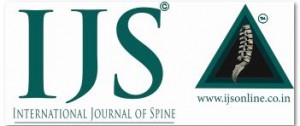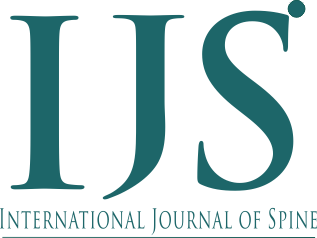Horner’s Syndrome After Anterior Decompression And Fusion For Cervical Spine Pathologies: Report Of Two Cases
Volume 5 | Issue 1 | January-June 2020 | Page: 6-8 | Tomotaka Umimura, Satoshi Maki, Masao Koda, Seiji Ohtori
Authors : Tomotaka Umimura [1], Satoshi Maki [1], Masao Koda [2], Seiji Ohtori [1]
[1] Department of Orthopedic Surgery, Chiba University Graduate School of Medicine, 1-8-1 Inohana, Chuo-ku, Chiba, Chiba 260-8677, Japan.
[2] Department of Orthopaedic Surgery, Faculty of Medicine, University of Tsukuba, 1-1-1 Tennodai, Tsukuba, Ibaragi, 305-8575 Japan.
Address of Correspondence
Dr. Tomotaka Umimura,
Department of Orthopedic Surgery, Chiba University Graduate School of Medicine, 1-8-1 Inohana, Chuo-ku, Chiba, Chiba 260-8677, Japan.
Email : adna4547@gmail.com
Abstract
Introduction: Horner’s syndrome is caused by impairment of the sympathetic trunk, resulting in associated ptosis, miosis, and anhidrosis. The cervical sympathetic trunk is sometimes damaged during an anterior approach to the lower cervical spine. We report two cases of Horner’s syndrome after anterior decompression and fusion for lower cervical spine pathologies.
Case Presentation: Case 1 was in a 58-year-old Japanese woman with a herniated C5-6 intervertebral disc presenting myelopathy who underwent anterior cervical discectomy and fusion of C5–C6. After the operation, miosis, and anhidrosis of the right face occurred and the symptoms continued for more than 15 years. Case 2 was in a 40-year-old Japanese woman whose diagnosis was flexion myelopathy with kyphosis at C5–C6 and canal stenosis, so she underwent anterior cervical C5-6 discectomy and fusion of C5–C6. Immediately after surgery, ptosis and miosis occurred, which lasted for 4 months.
Conclusion: Horner’s syndrome tends to occur during anterior cervical spine procedures, especially at the lower level, and the syndrome may be transient or irreversible. During an anterior approach to the lower cervical spine, taking care not to damage the sympathetic trunk is important to avoid this complication.
Keywords: Horner’s syndrome, Anterior cervical spine surgery, Complication.
References
1. Fountas KN, Kapsalaki EZ, Nikolakakos LG, Smisson HF, Johnston KW, Grigorian AA, Lee GP, Robinson JS Jr. Anterior cervical discectomy and fusion associated complications. Spine (Phila Pa 1976) 2007 Oct 1;32(21):2310-7.
2. Tew JM Jr, Mayfield FH. Complications of surgery of the anterior cervical spine. Clin Neurosurg 1976;23:424-34.
3. Bertalanffy H, Eggert HR. Complications of anterior cervical discectomy without fusion in 450 consecutive patients. Acta Neurochir (Wien) 1989;99(1-2):41-50.
4. Giombini S, Solero CL. Considerations on 100 Anterior Cervical Discectomies Without Fusion. Surgery of Cervical Myelopathy 1980;302-7.
5. George B, Lot G. Oblique. Transcorporeal Drilling to Treat Anterior Compression of the Spinal Cord at the Cervical Level. Minim Invasive Neurosurg 1994;37(2):48-52.
6. Saylam CY, Ozgiray E, Orhan M, Cagli S, Zileli M. Neuroanatomy of cervical sympathetic trunk: a cadaveric study. Clin Anat 2009 Apr;22(3):324-30.
7. Ebraheim NA, Lu J, Yang H, Heck BE, Yeasting RA. Vulnerability of the sympathetic trunk during the anterior approach to the lower cervical spine. Spine (Phila Pa 1976). 2000 Jul 1;25(13):1603-6.
8. Civelek E, Karasu A, Cansever T, Hepgul K, Kiris T, Sabanci A, Canbolat A. Surgical anatomy of the cervical sympathetic trunk during anterolateral approach to cervical spine. Eur Spine J 2008 Aug;17(8):991-5.
| How to Cite this Article: Umimura T, Maki S, Koda M, Ohtori S | Horner’s Syndrome After Anterior Decompression And Fusion For Cervical Spine Pathologies: Report Of Two Cases | International Journal of Spine| January-June 2020; 5(1): 6-8 . |





